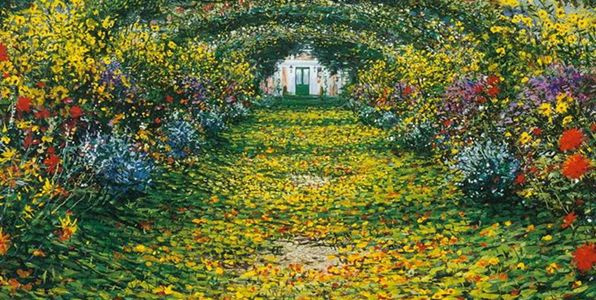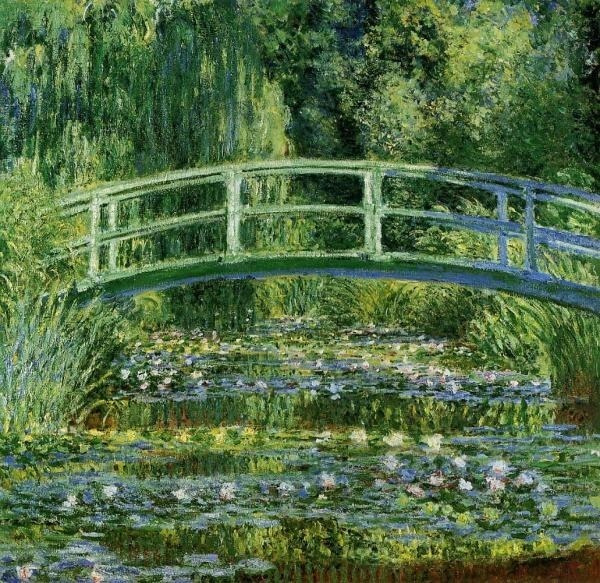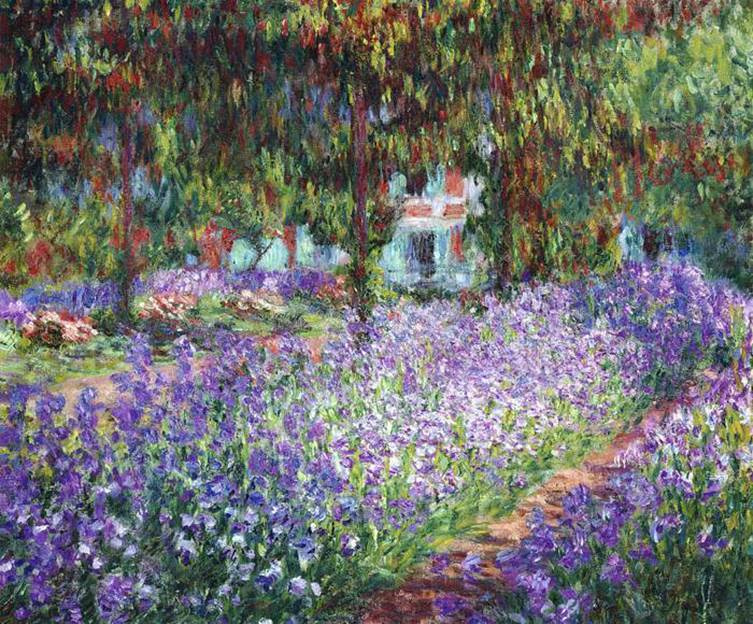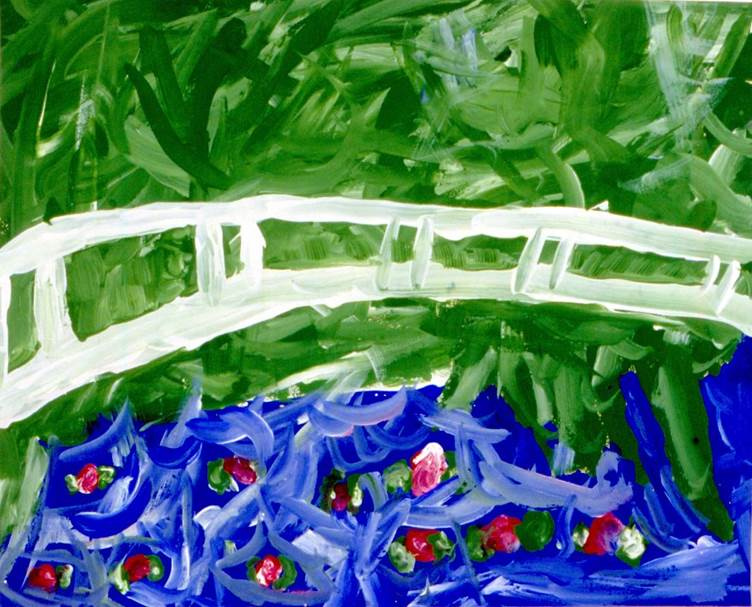In this article about Arthive, you will learn about the style in art, technique, famous paintings by the impressionist painter Claude Monet. Read the reports and reviews of the authors of Arthive.

Oscar-Claude Monet was one of the most famous painters to have come out of France and the founder of the impressionist style. He is known to be the precursor to modernism, especially through his attempt to paint nature as was perceived by him.
He had quite a long career as an artist, in which he was one of the most consistent and fruitful impressionists. His philosophy encouraged painters to put forward their perceptions, especially in outdoor landscape painting. The term impressionism came from one of the titles of his paintings, Soleil Levant, which meant impression.
This painting was exhibited in 1874 in Salon des Refuses, which loosely translates to 'exhibition of rejects.' This exhibition was another initiative by Monet and some of his associates as an alternative to Salon. Here they presented the modern art style of Claude Monet and started an indirect revolution against the conventional rules of painting.
He had quite a long career as an artist, in which he was one of the most consistent and fruitful impressionists. His philosophy encouraged painters to put forward their perceptions, especially in outdoor landscape painting. The term impressionism came from one of the titles of his paintings, Soleil Levant, which meant impression.
This painting was exhibited in 1874 in Salon des Refuses, which loosely translates to 'exhibition of rejects.' This exhibition was another initiative by Monet and some of his associates as an alternative to Salon. Here they presented the modern art style of Claude Monet and started an indirect revolution against the conventional rules of painting.
What was Impressionism All About?
Impressionism was an art movement that came into existence during the 19th century. It was characterized by the Monet art style, which mainly included relatively thin and small yet visible brush strokes.Along with that, there was an open composition that accurately depicted light and its changing qualities. Such paintings also consisted of simple and minimalistic subjects with unusual viewing angles and added movement as a crucial element of human experience and perception.
This art movement mainly originated with some Paris-based artists who were brought to recognition by their independent exhibitions during the 1870s and 1880s. However, impressionism was not a successful movement from the start. In the beginning, they face major backlash from the traditional art community in France.

The movement derived its name from Claude Monet’s style of work which he clearly showed in his work, the impression. Monet submitted his art, Impressions, as one of the first entries there, which was severely mocked by critics. A critic even went so far to call that painting an unfinished sketch
, or an ‘Impression'. This later caught on and described people who made such different paintings.
Impressionism in the art community dates back quite a few years. While the academy art community had set some conventional rules to be followed by artists, radicals in their time violated these.
Their pictures consisted of more freely brushed colors, which was more of a priority than maintaining lines and contours. This type of art was mainly inspired by painters like J. M. W. Turner or Eugene Delacroix.
They also indulged in painting realistic scenes of mostly outdoors and modern life. Before this movement, landscape stills or portraits were often painted indoors in a studio. However, the impressionists understood that they could better capture the transient and momentary colors and effects of the sun if they painted outdoors, in live view.
They were more focused on portraying an overall visual effect instead of catering to details. They used broken or short brushstrokes of both mixed and unmixed colors, which were intentionally not blended properly. This was done to achieve a more intense and colorful palette.
Impressionism in France started about the same time when a couple of other artists in the United States, like Winslow homer or Macchiaioli, were exploring outdoor painting. However, gradually the impressionist developed distinct and innovative techniques which were specific to the particular style.
The supporters saw it as an art of movement, candid poses, and play of light. This eventually gained some traction, and quite a lot of painters started appreciating the style and Claude Monet’s type of painting.
Impressionism in the art community dates back quite a few years. While the academy art community had set some conventional rules to be followed by artists, radicals in their time violated these.
Their pictures consisted of more freely brushed colors, which was more of a priority than maintaining lines and contours. This type of art was mainly inspired by painters like J. M. W. Turner or Eugene Delacroix.
They also indulged in painting realistic scenes of mostly outdoors and modern life. Before this movement, landscape stills or portraits were often painted indoors in a studio. However, the impressionists understood that they could better capture the transient and momentary colors and effects of the sun if they painted outdoors, in live view.
They were more focused on portraying an overall visual effect instead of catering to details. They used broken or short brushstrokes of both mixed and unmixed colors, which were intentionally not blended properly. This was done to achieve a more intense and colorful palette.
Impressionism in France started about the same time when a couple of other artists in the United States, like Winslow homer or Macchiaioli, were exploring outdoor painting. However, gradually the impressionist developed distinct and innovative techniques which were specific to the particular style.
The supporters saw it as an art of movement, candid poses, and play of light. This eventually gained some traction, and quite a lot of painters started appreciating the style and Claude Monet’s type of painting.

The public and critics, however, were not at all happy with this. However, they believed that the Impressionists had captured a new and unique way of capturing art with time. Even though the critics and other conventional art establishments never supported this kind of paintings, the generic public came around and appreciated it later.
Impressionism also preceded many other painting styles like Neo-impressionism, Cubism , Post-impressionism , and Fauvism . Impressionism also made its presence felt in other forms of media like impressionist literature or music.
Impressionism also preceded many other painting styles like Neo-impressionism, Cubism , Post-impressionism , and Fauvism . Impressionism also made its presence felt in other forms of media like impressionist literature or music.
What Painting Techniques Did Monet Use?
Claude Monet’s style cannot be easily described in just one paragraph, as he kept on reinventing with age. While during his early years, he had several mentors and influential figures teaching him new techniques, he would later implement these in his own way to create art.As a teenager, Claude Monet would only use charcoal to draw caricatures, up until he came across Eugene Boudin. Once that happened, he was introduced to oil painting. In his first recognized painting, Camille, his early style can evidently be noticed.
However, with practice and more knowledge, his style changed drastically in the middle years. In addition to learning oil painting from Boudin, he also learned 'en plein air,' essentially outdoor painting. At this time, Claude Monet’s type of art would mainly consist of rapid and broke brush strokes, with intentionally unblended colors.

Later in his life, it is said that Monet’s impressionist art had peaked, with the Giverny-inspired series including the Water Lilies and most other notable works. After this high point, he mainly focused on actualizing the effects of a changing day on scenes.
When it comes to the use of light, Monet’s love for natural lighting can be seen in some of his earliest works. He used to study how light reflects on touching a subject and the different shades of each as well.
Another very distinct feature of Claude Monet’s style and technique is the brush strokes. This technique, further refined throughout his entire career, mainly relied on fast and abrupt strokes. In the art piece, impression, Sunrise, this can be seen in full effect.
He was also renowned for his color palette. As Claude Monet’s impressionism art showed, he loved depicting color in a way the natural lighting reflected off of a surface. He used it in experimental and innovative ways, and it was heavily dependent on how things would look at different times of the day. He often used dark tones to further highlight the use of brighter hues.
When it comes to the use of light, Monet’s love for natural lighting can be seen in some of his earliest works. He used to study how light reflects on touching a subject and the different shades of each as well.
Another very distinct feature of Claude Monet’s style and technique is the brush strokes. This technique, further refined throughout his entire career, mainly relied on fast and abrupt strokes. In the art piece, impression, Sunrise, this can be seen in full effect.
He was also renowned for his color palette. As Claude Monet’s impressionism art showed, he loved depicting color in a way the natural lighting reflected off of a surface. He used it in experimental and innovative ways, and it was heavily dependent on how things would look at different times of the day. He often used dark tones to further highlight the use of brighter hues.
What influence did Claude Monet have on contemporary art?
Claude Monet’s painting style has not only brought the viewers to a new kind of painting, but it also paved the way for several art movements in the coming years. He relentlessly opposed the conventional norms set by art establishments as to how artists should paint.His success further encouraged several other artists to look at painting differently. Starting from popularizing outdoor paintings to using different brush strokes and an unblended color palette, Claude Monet’s modern art style has had a significant impact on the art industry as a whole.
His privately organized exhibition in the Paris studio of Nadar set a new scene, giving rise to other movements like Neo-impressionism, Cubism , Post-impressionism , and Fauvism .
Interesting Facts about Claude Monet
Everyone knows about the groundbreaking work Claude Monet’s painting style has done; however, they seldom know about the many other things he was a part of. Read to learn some interesting facts about him.• Monet’s realized his artistic talent from a very young age.
• Claude Monet served in Algeria as a soldier.
• At one point in life, Monet’s frustration with life led him to Jump off a bridge.
• He indirectly helped coin the term impressionism .
• Tourists can visit his former home in Giverny.
Famous paintings by Monet
There have been several works of Monet that are now hung across different museums in the world. However, when Monet first came into view, the critics and the general public were not pleased with him either. Further mentioned here are the five of the most recognizable and notable art pieces painted by Claude Monet that later changed the perspective of the viewers:• La Grenouillère, 1869
• Impression, Sunrise 1872
• Woman with a Parasol, 1875
• Haystack at the End of Summer, 1890−1891
• Houses of Parliament, 1900−1901











